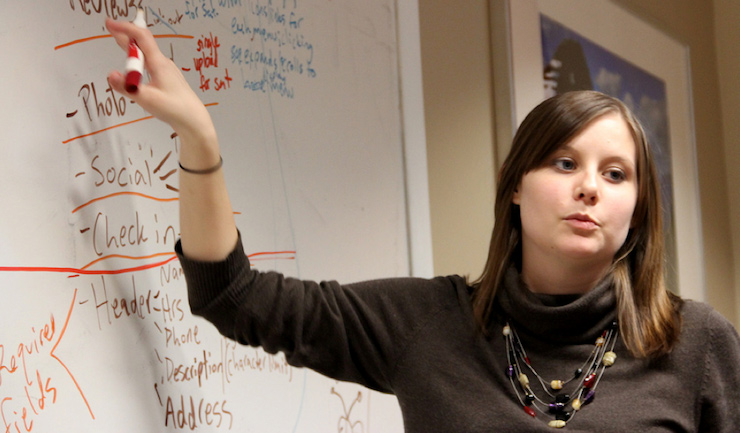One of Your Deliverables Should Be Education
Kevin Powers, Former Senior Digital Strategist
Article Category:
Posted on

Every Friday at Viget we gather for a company-wide meeting and lunch (brunch for our Boulder folks) and during that time one of us delivers a short presentation on a relevant topic. We call it a Labshare -- a humble routine indicative of the value we place on sharing and educating. A more formal example: our quarterly, public Google Analytics training. Whether it's buttoned up or strictly casual, we always look for opportunities to share and learn, particularly during the course of our client work. Pairing our deliverables with durable skills means our clients walk away with more value than can be detailed in a Task Order.
While a feel-good sense is intrinsic to this approach, there are practical reasons we do this as well. Here are a few recent examples:
- The Situation: During the course of month-to-month Google Analytics work, we recognized there were smaller tasks our client could handle and, consequently, be positioned to apply their budget in more meaningful ways.
Our Approach: Instead of simply resolving a request or answering a question without providing explanation, we took the time to walk the client through our approach and rationale, showing them the steps along the way. In the case of Google Analytics, this largely took the form of screen-shares and navigating the GA interface to find a particular piece of data. In addition to this day-to-day encouragement, we also conducted onsite training to foster even more self-sufficiency.
- The Situation: With talented designers in-house, our client's team was curious to better understand modern techniques and tools in the area of UX design and contribute more to the work at hand.
Our Approach: In this instance, we invited the client to our office for an afternoon of training in OmniGraffle, our preferred wireframing tool and a mainstay of our creative process. From there, we structured our reviews of new material in a more iterative, collaborative way, inviting the client more and more into the design process. The client, in turn, began to pass along these skills to in-house team members, which bettered their design process in various other areas beyond our specific project.
- The Situation: Our client had limited funding for ongoing support from Viget, yet needed to update and tweak (in reasonable ways) the Rails-based site we built as part of our project.
Our Approach: The most complex example of the three listed here, this scenario was also the most rewarding. It’s not unusual for our client teams to lack in-house Rails developers. Understanding this at the start of a recent project meant we could steadily move the knowledge bar up throughout the engagement. We began by encouraging our client to complete a few online courses; followed by thumbing through more advanced materials; and, then, at the point when our Rails app began to take shape, we sat with them to walk through the general architecture and data conventions. This process was an extended one, to be sure, and covered other key topics, such environments and deployment processes Fast forward to today, and our client is committing small updates to Github and pushing to production.
The examples here certainly aren’t meant to trivialize the expertise required in these areas. As creative, digital folk, we know it takes years (years!) of focus and experience to allow us to consult with clients in these ways. That’s why most clients come to us, after all...because of our expertise.
Transferring a bit of that knowledge and skill to allow your client to achieve more online (all the while tending to their product or organizational objectives) is a rewarding experience. Maybe not 1:1 dollars rewarding, but certainly positive juju for one’s business and heart-space.